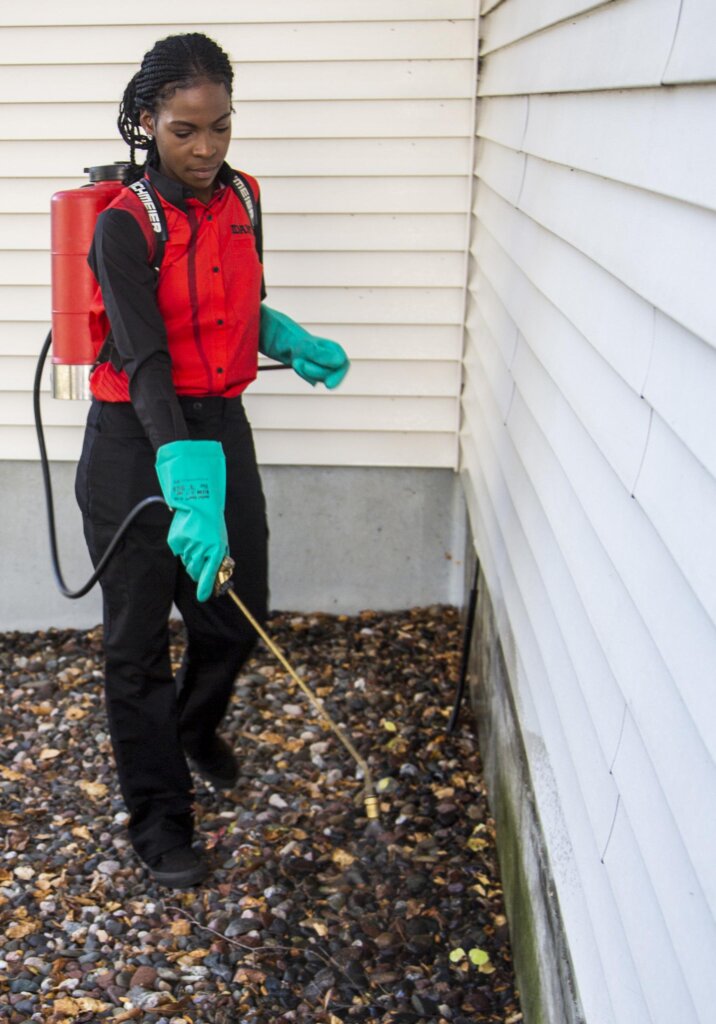Effective Insect Control Providers: An In-Depth Look at Extermination Techniques and Avoidance Procedures
In the realm of pest control solutions, the effective administration of invasions needs a thorough strategy that integrates different techniques and procedures for both elimination and prevention. From Integrated Insect Management (IPM) approaches that focus on lasting solutions to chemical elimination methods made for targeted elimination, the collection versus pests is large and diverse. Biological control methods and physical avoidance actions use alternate courses to successfully combating unwanted intruders. Nevertheless, the key to a thorough bug control plan lies not just in the techniques themselves, but additionally in the precise specialist inspection treatments that come before and educate them. By understanding the ins and outs of each technique and exactly how they interaction, one can really understand the intricacy and effectiveness of modern-day parasite control solutions.

Integrated Insect Monitoring (IPM) Strategies
Integrated Parasite Management (IPM) Techniques include a detailed method to pest control that concentrates on prevention, tracking, and control approaches to effectively manage bug populations. By integrating different methods, IPM aims to minimize the influence of insects while likewise minimizing the reliance on chemical pesticides. Prevention lies at the core of IPM, highlighting practices like correct hygiene, upkeep of hygiene, and securing entrance points to deter parasites from infesting buildings.
Chemical Elimination Strategies
Chemical elimination techniques are commonly employed in insect control services to efficiently get rid of insect populations that present a threat to human health and wellness and building. These strategies involve the usage of various chemical compounds especially designed to target and remove bugs such as pests, rats, and various other unwanted creatures. The application of chemicals, pesticides, rodenticides, and various other chemical agents is very carefully controlled to make certain optimum efficiency while reducing risks to human beings, pets, and the atmosphere.
Among the essential benefits of chemical extermination techniques is their capacity to give quick and targeted outcomes, making them specifically useful in situations of extreme problems or immediate pest control needs - a1 portland bed bug exterminator. However, it is vital to emphasize the relevance of appropriate handling, application, and disposal of these chemical products to stop unintended harm
Moreover, integrated pest monitoring (IPM) strategies commonly combine chemical extermination strategies with various other techniques such as cleanliness, environment alteration, and biological controls to produce a extensive and sustainable bug control technique. By incorporating chemical elimination strategies carefully within an IPM framework, parasite control solutions can properly manage parasite populaces while reducing prospective risks to human health and wellness and the environment.
Biological Parasite Control Approaches
Employing all-natural predators and bloodsuckers to handle parasite populations is a lasting approach called biological pest control. This technique uses the natural devices of the ecosystem to control insect populations without depending on synthetic chemicals. One typical organic control technique entails introducing all-natural enemies of the target pest types, such as ladybugs Read More Here for aphid control or nematodes for termite infestations. These natural killers prey on the parasites, assisting to keep their populaces in check.
Another effective biological control approach is using microbial pesticides. These are normally happening microorganisms, such as germs, fungi, and viruses, that particularly target and infect specific bug varieties. By utilizing these microbial representatives, bug populations can be properly reduced without damaging valuable microorganisms or causing injury to the atmosphere.
Physical Insect Avoidance Procedures
Executing physical bug avoidance procedures includes making use of obstacles and architectural alterations to discourage bugs from infesting a property or entering. Mounting door sweeps, displays on windows, and sealing splits in the structure can help stop bugs like pests and rodents from getting access indoors.
Another physical avoidance step is the use of barriers like fence to keep bigger parasites such as deer or raccoons far from the residential or commercial property. Setting up mesh or cable displays around yards can secure plants from being damaged by parasites. Appropriate waste administration, consisting of safeguarding trash bin with tight-fitting lids, is essential in hindering pests like rats, raccoons, and bugs. By implementing these physical insect avoidance procedures, residential or commercial property proprietors can dramatically reduce the danger of parasite invasions and the damage they can create.
Expert Parasite Examination Procedures
Performing methodical and extensive parasite assessments is a basic facet of specialist parasite management protocols. Expert bug inspectors are educated to diligently check out buildings for indications of problems, determining pest varieties, access points, and favorable problems. The assessment procedure generally starts with a thorough evaluation of both the interior and exterior of the properties. This entails monitoring useful reference for bug droppings, nibble marks, nests, and any structural damage that might show bug look at this website task. Furthermore, assessors might use customized tools such as moisture meters and borescopes to discover surprise invasions within wall surfaces or crawl spaces.

Verdict
Finally, effective bug control solutions employ a range of techniques, including Integrated Bug Monitoring techniques, chemical extermination techniques, biological controls, and physical avoidance measures. Specialist pest assessment treatments play a critical duty in determining and dealing with pest issues in a prompt manner. By implementing a mix of these approaches, building proprietors can successfully take care of and protect against insect invasions.
From Integrated Parasite Management (IPM) approaches that focus on sustainable options to chemical extermination techniques developed for targeted removal, the collection against bugs is huge and multifaceted.Integrated Bug Monitoring (IPM) Techniques encompass an extensive technique to pest control that focuses on surveillance, control, and avoidance methods to effectively handle insect populations.Chemical elimination strategies are commonly employed in bug control solutions to successfully eliminate pest populaces that present a risk to human health and wellness and building.Employing natural killers and parasites to handle pest populations is a lasting approach understood as organic parasite control.In verdict, reliable insect control services utilize a variety of strategies, consisting of Integrated Insect Management methods, chemical extermination techniques, biological controls, and physical avoidance steps.